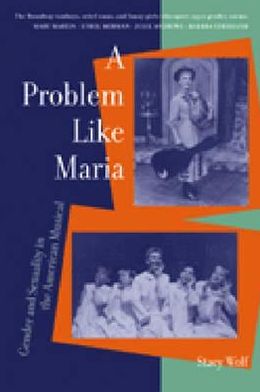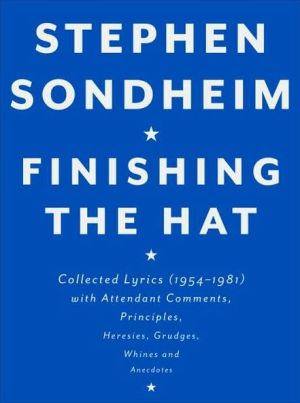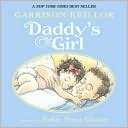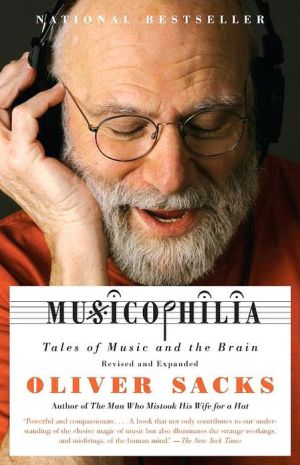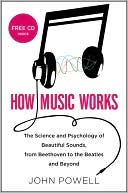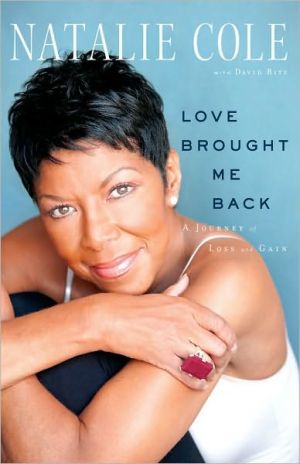A Problem Like Maria: Gender and Sexuality in the American Musical
Search in google:
The Broadway tomboys, rebel nuns, and funny girls, who upset the 1950s gender norms: Mary Martin, Ethel Merman, Julie Andrews, and Barbra Streisand Publishers Weekly American musical theater has long been considered integral to gay male culture, but what does it have to offer lesbian viewers? Plenty, argues Wolf, an English professor at the University of Texas at Austin and a self-confessed "feminist musical theater fan." While many people generally think of 1950s musicals as having a conservative slant and upholding conventional social norms, Wolf argues that the myriad "funny girls" of the '50s and '60s specifically Ethel Merman, Julie Andrews, Mary Martin and Barbra Streisand repeatedly appeared in roles that explicitly critiqued postwar gender norms. Wolf frequently insists she's not concerned with figuring out the actual sexual orientation of these actresses (though she often pauses to do so, decoding the Hollywood gossip surrounding Martin's marriage to gay actor Richard Halliday with obvious glee). Nor does she argue that they actually "played" lesbians on stage or in film. Rather, she's interested in using the tools of feminist and queer theory to examine the women's performances and public images. Her analysis of Martin's "tomboy" star persona (particularly as it is presented in South Pacific and Peter Pan) is shrewd, as is her discussion of Streisand's unconventional beauty and her explicit Jewishness. Unfortunately, Wolf only briefly considers why the genre of the musical itself might lend itself to such interpretive practice, and some readers may wish for a more general analysis of musical theater rather than such close attention to the minute details of these four individuals' performance histories. (Aug.) Forecast: While Wolf's points are sound, the book's target audience musical theater buffs may already be overfamiliar with her theme. Copyright 2002 Cahners Business Information.
A Problem Like Maria: Gender and Sexuality in the American Musical\ \ By Stacy Ellen Wolf \ University of Michigan Press\ Copyright © 2002 Stacy Ellen Wolf\ All right reserved.\ ISBN: 0472097725 \ \ \ INTRODUCTION\ \ \ \ In an early scene in Rodgers and Hammerstein's The Sound of Music, a group of nuns bemoans the irrepressible nature of one of their postulants, Maria. They sing to a sprightly melody that "she climbs a tree and scrapes her knee" and that "her dress has got a tear." Maria breaks all the rules; she sings in the abbey and "waltzes on her way to Mass"--actions that enrage some of the nuns and charm others. And in the spirit of the musical's delightful, if required, suspension of disbelief, this first verse of the nuns' song is in 3/4 time--a waltz. Thus they rail against what they themselves do: sing and waltz. Maria affects the nuns in potent ways, as they sing in an almost a cappella, cut-time recitative that sounds like a musical tailspin: "When I'm with her I'm confused / Out of focus and bemused / And I never know exactly where I am."\ \ Maria, unruly and uncontrollable, is a problem. Like many of Rodgers and Hammerstein's early songs that describe a main character's flaw or difficulty--Ado Annie's "I Can't Say No" in Oklahoma!, Nellie's "Cockeyed Optimist" in South Pacific, Cinderella's "In My Own Little Corner" in Cinderella--the nuns' song expresses what the character Maria is. The song serves the purpose of introducing Maria's character quirks. \ \ As the conventions of Rodgers and Hammerstein's musical theater go, the rest of the play must deal with this character's eccentricities. The character is usually a woman, usually needs to be taught a lesson, and usually is taught that lesson by a man. In South Pacific, Nellie learns from Emile to be racially tolerant, and he learns to value love as much as politics. In The King and I, Anna learns a lesson of multicultural tolerance from the King of Siam, and she teaches him to be gentle and to trust a woman. In Cinderella, the leading woman learns that differences in class and status don't really matter and that one can find true love. Sometimes the Rodgers and Hammerstein heroine changes, and sometimes she changes the man. But she always learns her lesson, and she becomes the wiser for it. Like many of the musicals by Rodgers and Hammerstein and other composers and lyricists of the period, The Sound of Music features two principal characters, a woman and a man, Maria and Captain von Trapp, who are temperamental opposites. In this and other musicals of the postwar era, they reconcile their differences, sing together, and marry by the end. \ \ Unlike many musicals, however, The Sound of Music does not introduce the two principals one right after the other. In South Pacific, for example, Nellie sings "Cockeyed Optimist," and then Emile sings "Some Enchanted Evening." In Irving Berlin's Annie Get Your Gun, Frank Butler sings "I'm a Bad Bad Man," and then Annie sings "Doin' What Comes Naturally." In Lerner and Loewe's My Fair Lady, Eliza sings "Loverly," and then Higgins sings "Why Can't the English." In contrast, in The Sound of Music, many songs pass before the male principal appears, and when he does, he barely sings at all. Instead, the nuns enter early in the musical and sing; they are set up as Maria's opposition. \ \ Yet the nuns' song, in a range of female voices, does not take up a position, attitude, or temperament opposite to that of the female principal, as the early songs sung by men do, but attempts, rather, to situate her. From many different points of view Maria is the focus and the center. Maria, the one who can "outpester any pest / Drive a hornet from his nest," the one who can "throw a whirling dervish out of whirl," is the problem. \ \ Maria's singing of the title song opens the musical, followed immediately by the nuns' scene. In "The Sound of Music," Maria reveals much about herself, not by describing what she is but by expressing what she wants. "My heart wants to beat / Like the wings / Of the birds that rise / From the lake to the trees," she sings. The day is over, and she must return to the abbey, even though "deep in the dark green shadows are voices that urge [her] to stay." When her "heart is lonely," she finds solace in the mountains. In this way, her first song resembles Rose's first song, "Some People," in Gypsy, Eliza's "Loverly" in My Fair Lady, and many other opening numbers in musicals by different composers and lyricists. "The Sound of Music" functions more as an "I want" song than as an "I am" proclamation. In The Sound of Music, other characters introduce what Maria is. She cannot explain what she is by herself, only what she wants. She is figured as a character full of desire. \ \ Even as Maria fits into a recognizable Rodgers and Hammerstein female type, there is something different about her. What kind of "problem" is Maria? No language or word can describe her as the nuns first try out and then reject the possibilities--a "flibbertijibbet," a "will-o'-the-wisp," a "darling!" a "demon!" a "lamb!" She is associated with nature--with moonbeams, with ocean waves, with clouds. She is "unpredictable as weather," "flighty as a feather," untamed, outside the social order. \ \ In The Sound of Music, the "problem" is that Maria has chosen the wrong path for her life. She is not destined to be a nun, but a wife and a mother. The problem, then, is that she ought to be a practicing heterosexual. Her desire to be out of doors and to sing and climb trees can be seen as an expression, a rechanneling, or a sublimation of her sexual desires, since in the strict, self-disciplining world of the abbey, there is no sex (and no singing, they sing). Maria's gradual, halting, but steady march toward her heterosexual life and large nuclear family, which begins with the nuns' song, is clearly one reason why she remains one of the most loved characters in the American musical theater. \ \ But there are other ways to see Maria. For many spectators, Maria seems to be a lesbian, and the "problem" seems to be that she is one. Now, of course, she isn't really a lesbian, and Rodgers and Hammerstein (probably) didn't intend for her to be one. And most likely, neither Mary Martin on Broadway nor Julie Andrews on film considered her to be a lesbian in their characterizations of her. But still, to audiences who are inclined to look and listen in this way, she fits. For some audiences, Maria, as embodied by Martin on stage and then Andrews in the film, can be seen and heard as a "lesbian." This book, then, is not concerned with producers' intentions or even with the meanings that mainstream culture has found in musicals, which have been widely written about, but instead rereads musicals from a lesbian and feminist perspective by design. \ \ In A Problem Like Maria, I argue that musicals generate queer meanings and offer queer pleasures for audiences. In the chapters that follow, I detail a range of four women's performances to chart four different "lesbian" types that these women embody and envoice. \ \ I introduce "lesbian" in quotation marks purposefully, to emphasize that I am arguing neither that any of the four actors constituting the focus of this book were lesbians nor that any of the characters they play are lesbians. In contrast, terming them "lesbian" is a shorthand way of asserting that they can be read as lesbian. This rhetorical gesture is just that, a device employed in order to create a persuasive reading of these women as "lesbian." \ \ This kind of reading is, to some extent, invited by the song, since to be literal, it is not Maria herself who is the problem; rather, she is compared to a problem that the nuns must solve: "How do you solve a problem like Maria?" The relationship between Maria and the "problem" is one of metaphor and approximation, not unlike this author's search for lesbians in musicals. And the fact that there is a problem like Maria--rather than, say, the problem that is Maria--suggests that there could be similar "problems" elsewhere. This problem has the possibility of multiplying, much like the contagious pleasure of finding lesbians in musicals once one begins to look at and hear musicals differently. The challenge is to determine how lesbians appear where none officially exist. \ \ Making Meanings \ \ For musicals, as for any novel, film, musical composition, dance, or performance--any cultural work, that is--meanings emerge through a negotiation or a "struggle over meaning" among text, context, and spectator. Any reading, analysis, or interpretation of a performance, then, already incorporates all three terms. In other words, when we say that a play means something, we have already interpreted that play; already considered some aspects of the context and not considered others; already used particular interpretive skills, of which we may or may not be conscious, to make meaning. "Text," "spectator," and "context" are mutually interdependent terms that might be seen to constitute three sides of a triangle. \ \ The first side of the "meaning triangle" concerns context. In terms of context, this book is both historical and undeniably a- or even antihistoricist, in the sense that it practices what Judith Halberstam terms "perverse presentism." In other words, I examine the historical contexts in which these lead women originally performed but analyze those performances using theories of gender and sexuality developed many years later. It's quite likely that these women would not have been interpreted as conveying "lesbian" when they appeared in these musicals. The performances of Merman, Martin, Andrews, and Streisand originated in the cultural context of the late 1940s through the early 1960s, and historical assumptions about gender and sexuality are crucial to some of their meanings. At the same time, these women are an enduring part of American culture, partially accessible by way of photographs, recordings, films, or videotapes. They live in the collective cultural memory, as their names are well known to many, their faces iconic, and their voices immediately recognizable. They are historically significant for their own eras and also for the present. Context, then, includes the present moment and the sustained proliferation of references to the musicals of these four women. \ \ The second side of the meaning triangle is that of the spectator. The spectator imagined here is feminist and lesbian, a position that can be inhabited by any spectator willing to look and hear from a lesbian point of view. The terms "woman," "feminist," and "lesbian" are used somewhat interchangeably to underline this book's primary concern with spectators' uses of the musical, however they might identify themselves. I do not argue that lesbians possess an idiosyncratic or uniform viewpoint. Indeed, some lesbians might not see musicals from a feminist perspective at all. In short, this book aims not to theorize the intricacies of identity nor even to posit a demonstrable connection between identity and interpretive practices but to model feminist and lesbian readings of musicals that are readily available to spectators willing or inclined to look and hear in certain ways. The form of the musical itself encourages spectators to engage with it from identity positions not their own. \ \ The third side of the triangle, that of the text, refers here to the American musicals of Martin, Merman, Andrews, and Streisand. The "text" also includes scripts, interviews, letters, biographies, autobiographies, photographs, videotapes, recorded sound, and the off-stage lives of the four leading women as documented by the media. \ \ This book emphasizes the cultural memory of musicals and focuses on performers rather than on the composers, lyricists, directors, choreographers, and designers who collaborated to produce each show. While there is no doubt that Rodgers and Hammerstein created the Broadway musical as we know it, the traditional approach to musical theater history that emphasizes the evolution of the musical's form often does so at the expense of performance analysis. Traditional scholarship of musicals has studied the text (the libretto and the score) above all, only occasionally detailing elements of design, directing, and acting, singing, and dancing. This shortcoming appears to arise from a central methodological dilemma: performance analysis requires the physical proximity of scholar to scene, yet theater is fleeting. However extensive the gossip network and however sharp a given spectator's memory, Broadway musicals of the 1950s and early 1960s are no more. One can read reviews, look closely at publicity photos, listen to cast albums, or witness short scenes restaged on television tributes to composers. One can make assumptions about the work of choreographers based on reproducible dances or film versions of musicals. But the specific details of Ethel Merman's Momma Rose or Julie Andrews's Eliza are lost. \ \ In writing theater histories and performance analyses of musicals, we need to acknowledge that, as with the writing of all theater histories, desire to have experienced the original event and the absence of that event significantly structure our research. Some studies of Broadway musicals compensate for this absence by creating a rhetorical sense of "I-was-there"-ness that is both seductive and dangerous. When an astute, prolific writer like Ethan Mordden provides a firsthand account of the opening night of Call Me Madam in his book on 1950s musicals, Coming up Roses, I can only wonder how accurately he remembers details about performances witnessed more than fifty years ago. While his evocative description ably provides a sense of the performance, it also belies the fleeting nature of theater and the imaginative labor of the theater scholar. \ \ Some spectators do remember seeing Mary Martin in person, flying across the Broadway stage in 1954. Others saw her on television in 1960. Others now own the videotape of Peter Pan. Still others have heard the cast album or have seen photographs of her. Even as I take into account the different forms of photographs, interviews, scripts, and recorded songs, I do not attempt the futile task of reconstructing a live performance. Instead, I am interested in how representations, visual and aural, can evoke a sense of a live performance, perhaps one witnessed by the reader and now lodged in memory or perhaps one only imagined. All writing about performance is incomplete, but usefully so. As Peggy Phelan argues, "Performance's only life is in the present. Performance cannot be saved, recorded, documented, or otherwise participate in the circulation of representations of representations: once it does so, it becomes something other than performance." In other words, once performance is represented in some way--through recording or description or written or spoken recollection--it no longer counts as performance but becomes a different kind of representation altogether. Attempting to document the "undocumentable event," Phelan asserts, requires the "rules of the written document" and so changes the "tracelessness" that makes performance so significant. Phelan suggests that "the document of a performance then is only a spur to memory, an encouragement of memory to become present." Because the original texts--the actual live performances of Broadway musicals in which Martin, Merman, Andrews, and Streisand starred--are long gone and because fans experience and understand musicals differently, I use a range of representations in this book to examine the women's lives, careers, and performances. The reconstruction requires imagination as well as research. \ \ Because so few people actually saw musicals during their original Broadway runs, what counts as "memory" and as "performance" varies greatly. For example, the importance of the cast album, one of the key sources of "evidence" for this book, changes over time. When My Fair Lady was playing on Broadway in the mid-1950s, the cast album was a desirable commodity that, for some people, was almost as valuable as actually having seen the musical itself. After the musical closed, the cast album took on a life of its own, separate from the play. The songs were memorable even out of context. The songs of mid-twentieth-century musicals also have a life outside of the show, and many listeners know only the music and not the script or the story. For many baby boomers, the songs of 1950s musicals occupy a place of almost unconscious knowledge. Many people know the words to musicals that relatively few people actually saw on Broadway. But the cast album, the musical's ever-available remains, camouflages loss. Owning a cast album means that many listeners never experience loss; they never experience missing the play. Other fans of musicals are familiar with the shows themselves from high school, community, or other local theater productions. \ \ This book is concerned with interpreting musicals differently: in seeing and hearing in nonconventional ways; in consciously accounting for the importance of spectators' identifications and desires; in not taking for granted heterosexual narratives; in seeing the lesbian in the straight character; in recontextualizing, replacing, re-viewing. These are precisely the interpretive practices prompted by seeing movies, watching television, listening to cast albums, and participating in a culture that seldom explicitly represents lesbians or lesbian desires. The pervasive nature of a media devoid of lesbian representation can lead spectators to see, hear, and experience musical theater differently, queerly. \ \ Histories and Contexts \ \ In the mid-twentieth century, Broadway musicals like Carousel, Guys and Dolls, and Damn Yankees served as mainstream culture, both reflecting and shaping the concerns and fascinations of the United States. With the enormously influential, almost simultaneous developments of the long-playing album and of television in the 1950s, musical theater became available to a mass audience. The frequent appearances of musical theater stars on television variety shows, which relied on many techniques of the stage in television's early years, and the sales of original cast albums brought musical theater to millions of American homes. To this day, Mary Martin and Ethel Merman's thirteen-minute medley of Broadway show tunes on Ford's fiftieth anniversary show in 1953 is cited as a great moment in television history. The album of My Fair Lady, with Julie Andrews and Rex Harrison, was released three days after the show's March 1956 opening. It sold over five million copies and was the number one album on the Billboard magazine charts for weeks. When Andrews and Richard Burton appeared together on the Ed Sullivan Show in 1960 and sang "What Do the Simple Folk Do?" from Camelot, ticket sales for the recently opened show skyrocketed. And Martin's 1960 filmed-for-television performance as Peter Pan is still the standard musical version of J. M. Barrie's classic story.\ \ \ \ Continues... \ \ \ \ Excerpted from A Problem Like Maria: Gender and Sexuality in the American Musical by Stacy Ellen Wolf Copyright © 2002 by Stacy Ellen Wolf. Excerpted by permission.\ All rights reserved. No part of this excerpt may be reproduced or reprinted without permission in writing from the publisher.\ Excerpts are provided by Dial-A-Book Inc. solely for the personal use of visitors to this web site. \ \
List of Performances CitedIntroduction11Mary Martin452Ethel Merman893Julie Andrews1314Barbara Streisand1735The Sound of Music203Afterword235Notes239Index275
\ Publishers WeeklyAmerican musical theater has long been considered integral to gay male culture, but what does it have to offer lesbian viewers? Plenty, argues Wolf, an English professor at the University of Texas at Austin and a self-confessed "feminist musical theater fan." While many people generally think of 1950s musicals as having a conservative slant and upholding conventional social norms, Wolf argues that the myriad "funny girls" of the '50s and '60s specifically Ethel Merman, Julie Andrews, Mary Martin and Barbra Streisand repeatedly appeared in roles that explicitly critiqued postwar gender norms. Wolf frequently insists she's not concerned with figuring out the actual sexual orientation of these actresses (though she often pauses to do so, decoding the Hollywood gossip surrounding Martin's marriage to gay actor Richard Halliday with obvious glee). Nor does she argue that they actually "played" lesbians on stage or in film. Rather, she's interested in using the tools of feminist and queer theory to examine the women's performances and public images. Her analysis of Martin's "tomboy" star persona (particularly as it is presented in South Pacific and Peter Pan) is shrewd, as is her discussion of Streisand's unconventional beauty and her explicit Jewishness. Unfortunately, Wolf only briefly considers why the genre of the musical itself might lend itself to such interpretive practice, and some readers may wish for a more general analysis of musical theater rather than such close attention to the minute details of these four individuals' performance histories. (Aug.) Forecast: While Wolf's points are sound, the book's target audience musical theater buffs may already be overfamiliar with her theme. Copyright 2002 Cahners Business Information.\ \
